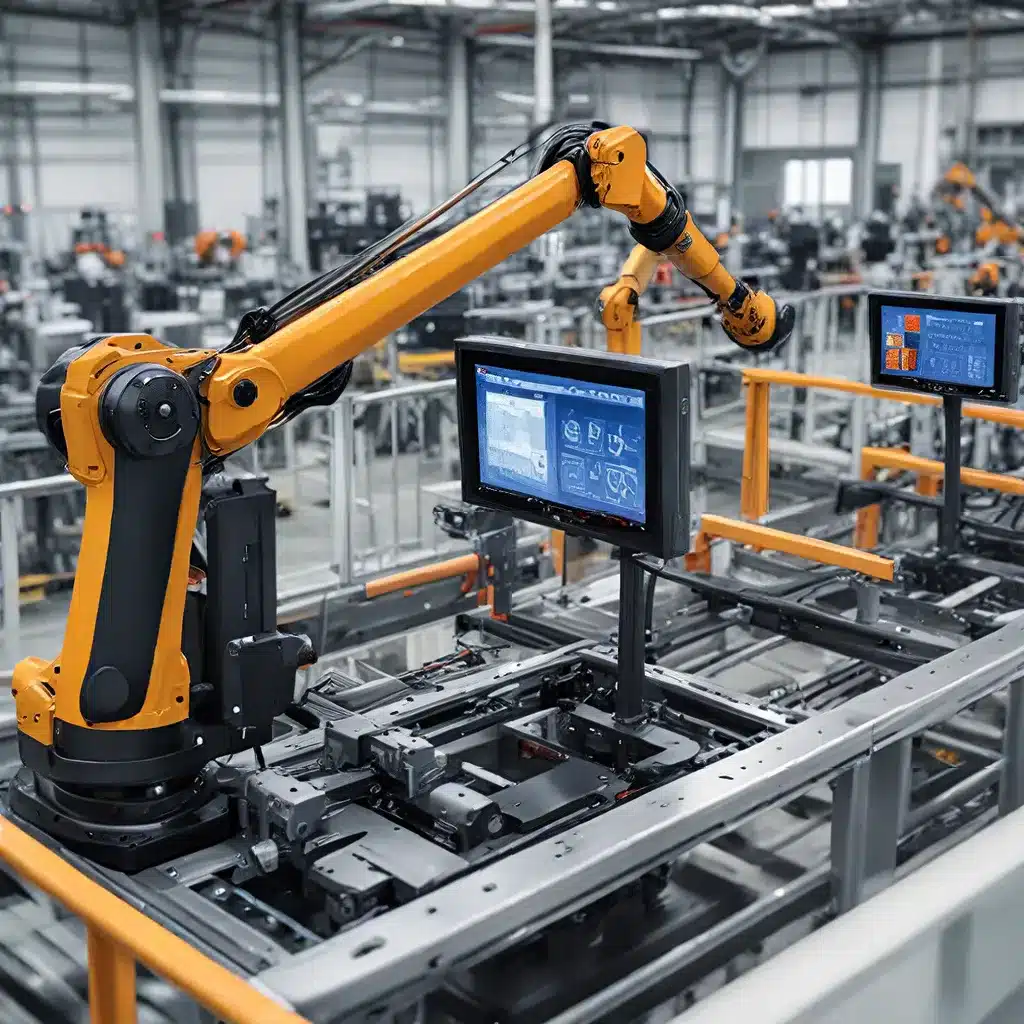
As the industrial landscape continues to evolve, the advent of Industry 4.0 has ushered in a new era of transformative possibilities for manufacturers. At the heart of this revolution lies the power of sensor networks and the Internet of Things (IoT). These technologies are enabling the creation of smart factories that are redefining the boundaries of efficiency, flexibility, and responsiveness.
The Rise of Smart Manufacturing
The journey to Industry 4.0 has been a gradual yet profound progression. The first industrial revolution introduced mass production through the use of water and steam power, while the second revolution saw the advent of assembly lines and the widespread adoption of oil, gas, and electricity. The third industrial revolution then brought computerization and advanced telecommunications to the manufacturing process.
Now, we find ourselves in the midst of the fourth industrial revolution, where increasing automation and the employment of smart machines and smart factories are transforming the industry. By collecting and analyzing data from a network of interconnected sensors, manufacturers can achieve new levels of information transparency and make better-informed decisions.
The integration of IoT, cloud computing, and advanced analytics into manufacturing processes has been a key driver of this transformation. Sensor-equipped machines on the factory floor can now collect and share valuable data, enabling real-time visibility, predictive maintenance, and enhanced quality control.
The Role of Sensor Networks in Smart Manufacturing
At the heart of the smart manufacturing revolution are sensor networks. These interconnected systems of sensors, embedded software, and robotics are the backbone of the Industrial Internet of Things (IIoT). By collecting and analyzing data from these sensors, manufacturers can gain unprecedented insights into their operations, leading to increased automation, predictive maintenance, and self-optimization of processes.
One of the key advantages of sensor networks in smart manufacturing is their ability to combine data from various sources, including production operations, supply chain, customer service, and enterprise systems. This integration of data from previously siloed information allows manufacturers to create whole new levels of visibility and insight, enabling them to make more informed decisions and respond more effectively to customer demands.
The use of high-tech IoT devices in smart factories has led to higher productivity and improved quality. By replacing manual inspection with AI-powered visual insights, manufacturers can reduce manufacturing errors and save time and money. With just a smartphone connected to the cloud, quality control personnel can now monitor manufacturing processes from anywhere, empowering them to detect errors immediately rather than at later stages when repair work is more expensive.
Driving Innovation in Smart Manufacturing
The digital transformation driven by Industry 4.0 has unlocked a wealth of opportunities for manufacturers to innovate and gain a competitive edge. One of the key innovations is the creation of digital twins, which are virtual replicas of processes, production lines, factories, and supply chains.
By simulating production processes using data from IoT sensors and connected devices, manufacturers can test changes to the process and find ways to minimize downtime or improve capacity. This predictive capability allows them to optimize their operations and respond more effectively to changing market demands.
The integration of sensor networks and IoT technology also enables manufacturers to achieve greater mass customization. By leveraging advanced simulation software, new materials, and 3D printing, they can create small batches of specialized items for individual customers in a cost-effective manner, meeting the increasing demand for personalized products.
Addressing the Challenges of Smart Manufacturing
While the benefits of smart manufacturing are undeniable, the digital transformation also presents new challenges that must be addressed. One of the primary concerns is cybersecurity, as the connectivity of operational equipment in the factory or field exposes new entry points for malicious attacks and malware.
When undergoing a digital transformation to Industry 4.0, it is essential to consider a comprehensive cybersecurity approach that encompasses both IT and OT equipment. This integrated security strategy helps to mitigate the risks associated with the convergence of information technology (IT) and operational technology (OT) systems.
Another key challenge in smart manufacturing is energy management. The increased use of sensors, connected devices, and data processing in smart factories can lead to significant energy consumption. To address this, manufacturers are exploring energy-efficient sensor network designs, edge computing, and renewable energy integration to optimize their energy usage and reduce their environmental impact.
Conclusion: Unlocking the Full Potential of Industry 4.0
As the digital transformation of the manufacturing industry continues to accelerate, the integration of sensor networks and IoT technology is poised to drive unprecedented levels of innovation and efficiency. By embracing the power of smart manufacturing, manufacturers can unlock new opportunities to enhance their productivity, improve quality, and better meet the evolving needs of their customers.
However, the journey to Industry 4.0 is not without its challenges. Manufacturers must address cybersecurity risks, energy management concerns, and the complexities of data integration to fully realize the benefits of this transformative shift. By partnering with experts and leveraging the latest technological advancements, manufacturers can navigate these challenges and position themselves for success in the new era of smart manufacturing.